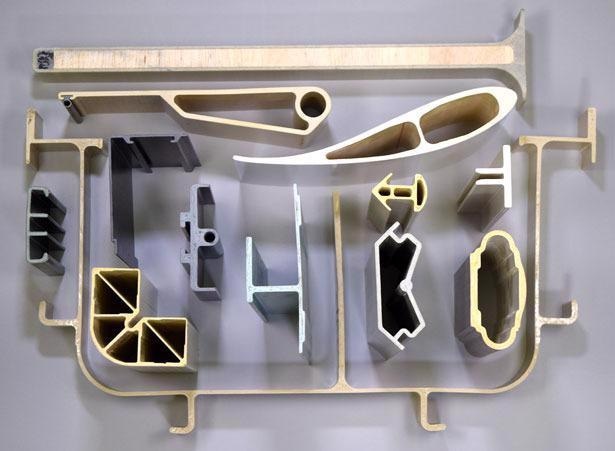The technique of producing continuous lengths of reinforced polymer structures by utilizing a pulling system is known as pultrusion. This method is extremely versatile, lending itself to the fabrication of a limitless range of profiles, as long as the correct shape forming and curing die is available.

Image Credit: Strongwell Corporation
Net-shape workpieces are created in a single uninterrupted process on-line, needing minimal, if any, further finishing and formatting after the profile has been cut to size with the integrated cutting saw.
Fiberglass pultrusions gain their end-use thermomechanical properties via this singular preparation process, unlike structural timber, which must be cured before use. Profiles can even be engineered to adhere to the highest standards of flame testing with no further coating or treatment afterward.
Achieving Flame Retardancy via Pultrusion
The superior performance of reinforced fiber pultrusions is due to a combination of sub-processes and material characteristics. The “wet-out” stage is vital among these when the continuous reinforcement materials are saturated in a user-defined resin system.

Image Credit: Strongwell Corporation
This plays a key part in the structural stability of the shape and in guaranteeing the part can adequately perform in end-use conditions. The type of resin that is utilized is the main determiner of the part’s chemical and thermomechanical characteristics, including flame retardance.
For instance, with respect to infrastructure, off-shore gas and oil structures have conflicting operational demands.
Materials have to be high-strength and extremely tough without a commensurately high weight profile. They must also meet extremely high standards for flame retardancy and stand up to aggressive corrosives to comply with the relevant health and safety regulations.
Usually, fiberglass pultrusions for the gas and oil sector exploit premium polyester and vinyl ester resins to comply with ASTM standard E84 - 07, which relates to the surface burning characteristics of building materials.
Flame Retardancy Standards
The American Society for Testing and Materials (ASTM) provides quantitative benchmarks of quality by establishing a range of safety standards for virtually any goods and materials. These are employed to exceed minimum regulatory requirements for safety-critical applications and to grade products in terms of performance brackets.
One of the most widely accepted standards for flame retardancy is ASTM E84 – 07, testing the surface burn characteristics of products in response to a vertical burner.
Materials that are intended for utilization in exposed surfaces (walls, ceilings, etc.) are tested by mounting them in the ceiling position above an ignition source. The flame spread of the ignition source is then observed and analyzed, alongside smoking properties.
This standard describes materials that resist the spread of fire even in response to direct impingement. It also characterizes goods that will mitigate dynamic safety concerns in the event of a severe fire by not shedding flaming matter.
In order to guarantee safe operations in the oil and gas sector, fiberglass pultrusions, such as stairways, railings, grating and ladders, can be engineered for extremely high standards of flame retardancy. For example, a fairly recent, and much more stringent fire standard, is ASTM F3059, which is specific to gratings used in marine construction and shipbuilding.
Fireproof Pultrusions from Strongwell
Strongwell is the world’s leading manufacturer of reinforced polymer profiles using pultrusion techniques, with a history of supplying tailor-made systems for demanding areas of application.
They are able to supply a catalog of flame retardant products that adhere to strict regulatory standards, alongside proprietary systems which are built for the utmost reliability in extreme conditions.

This information has been sourced, reviewed and adapted from materials provided by Strongwell Corporation.
For more information on this source, please visit Strongwell Corporation.